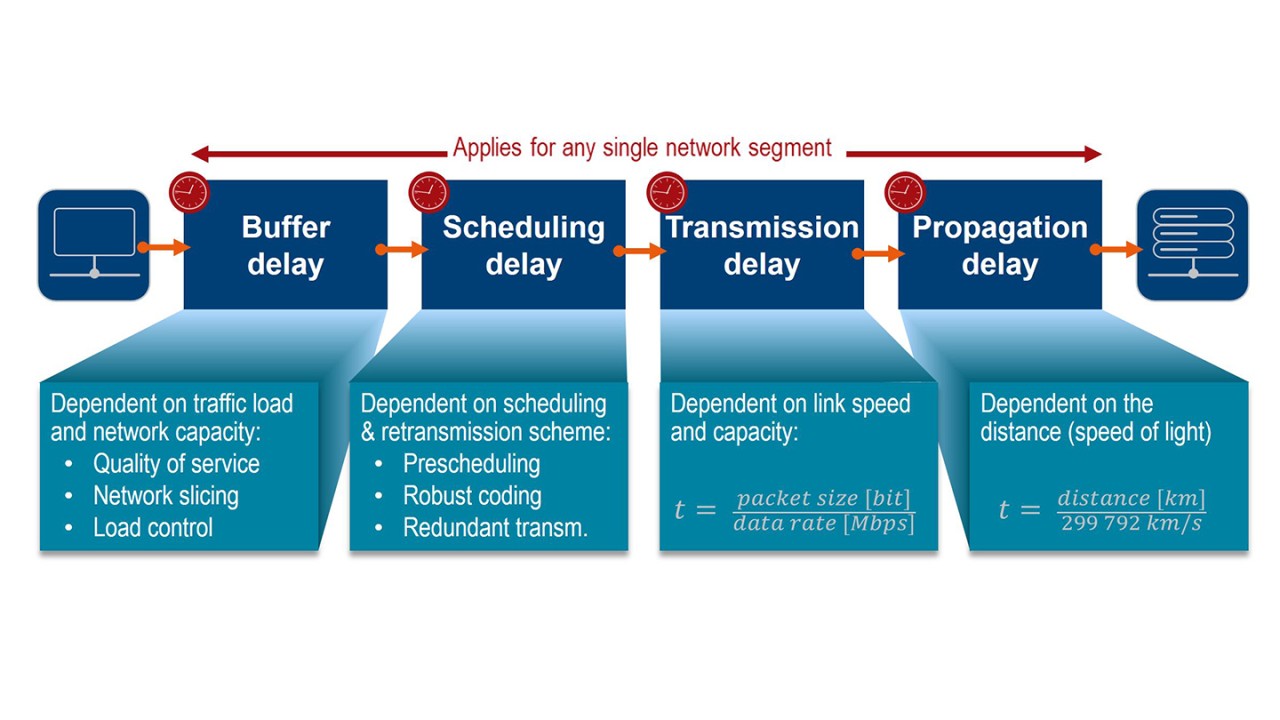Test consideration for low latency communication
Make the right design decision and ensure best in class implementation of the latency critical components.
The one-way end-to-end communication latency is a critical performance parameter for the majority of IoT applications. The typical requirements range from minutes for environmental sensors or smart meters to less than 100 ms for voice communication or to less of one millisecond in factory automation. There are several factors influencing the end-to-end latency such as scheduling schemes, link transmission speed or distance. Considering all relevant aspects of the end-to-end packet flow should result in selecting the appropriate architecture, technologies and features to meet the application requirements. Finally, the latency on the wireless communication interface is dependent on the best-in-class RF performance.








